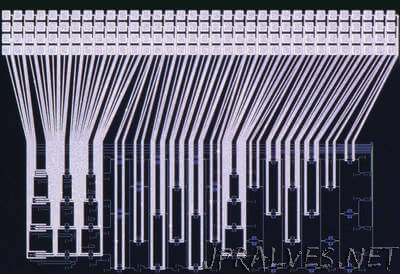
“We may use photons to carry our data, but we rely on the electron to put it to use. One day that division of labor might not be so stark. A team at Hewlett Packard Labs, in Palo Alto, Calif., has built a demonstration chip that could help push some particularly thorny computations into the realm of light, potentially boosting speed and saving energy in the process. Silicon integrated circuits containing parts that can manipulate light are not new. But this chip, which integrates 1,052 optical components, is the biggest and most complex in which all the photonic components work together to perform a computation, says team member Dave Kielpinski, a senior research scientist at Hewlett Packard Labs (now a part of Hewlett Packard Enterprise, or HPE). “We believe that it is by a wide margin,” he says. The chip, which was developed through the U.S. Defense Advanced Research Projects Agency’s Mesodynamic Architectures program and was still undergoing testing as IEEE Spectrum went to press, is an implementation of an Ising machine—an approach to computation that could potentially solve some problems, such as the infamous “traveling salesman problem,” faster than conventional computers can.”
